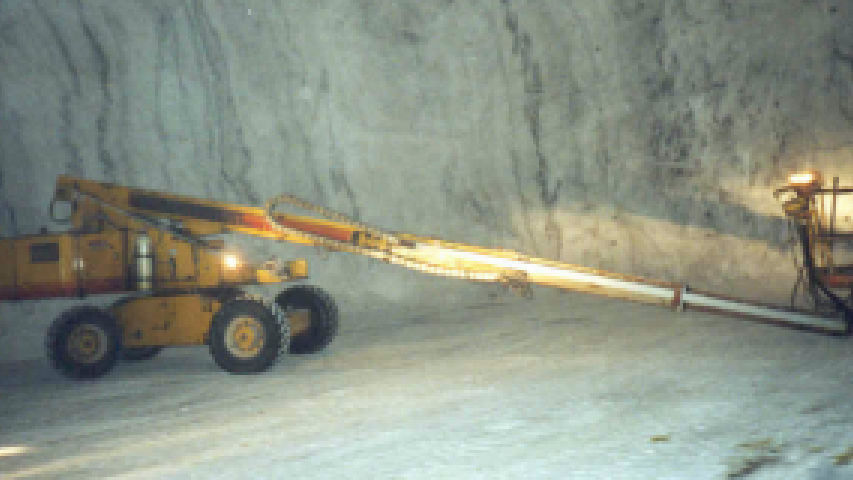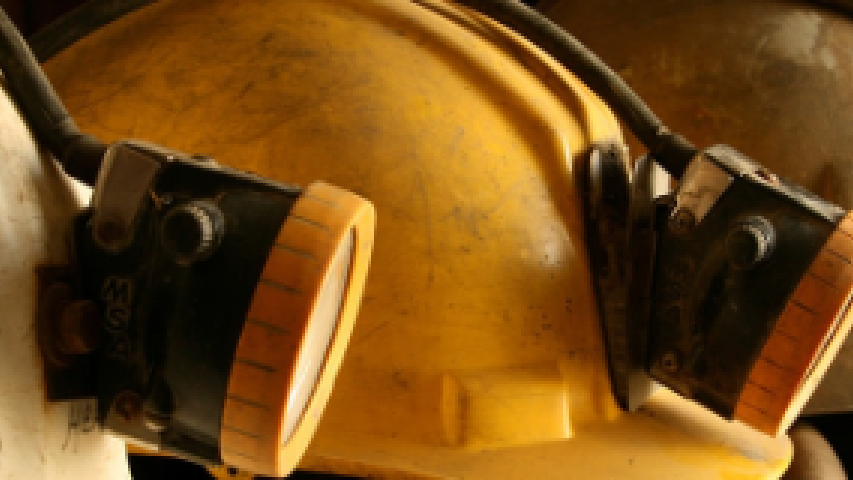11/10/2020
In The Matter of PETITION FOR MODIFICATION
U.S. Silica Company Columbia Plant
I.D. No. 38-00138
Docket No. M-2020-002-M
Proposed Decision and Order
On May 1, 2020, U.S Silica Company filed a petition seeking a modification on 30 C.F.R. § 56.13020 for Petitioner’s Columbia Plant, I.D. No. 38-00138 in West Columbia, South Carolina. The Columbia Plant processes industrial sand. The Petitioner alleges that the alternative method, consisting of a clothes cleaning booth that uses regulated compressed air for cleaning miners’ dust-laden clothing, will at all times guarantee no less than the same measure of protection afforded the miners by the standard.
The standard at 30 C.F.R. § 56.13020, Use of compressed air, provides:
At no time shall compressed air be directed toward a person. When compressed air is used, all necessary precautions shall be taken to protect persons from injury.
MSHA investigators conducted an investigation relevant to the merits of the petition and filed a report of their findings with the Administrator for Mine Safety and Health Enforcement (Administrator). After a careful review of the entire record, including the petition and MSHA's investigative report, the Administrator issues this Proposed Decision and Order.
Findings of Fact and Conclusions of Law
On August 12, 2020 an inspection of the clothes cleaning booth was conducted by Columbia, SC Field Office to determine if the company had met or exceeded the minimum standard of 30 C.F.R. §56.13020. Installation of the clothes cleaning booth as designed (layout shown in Appendix A) was confirmed, and operation of the unit was tested. Key parameters were monitored including the inlet pressure, the reservoir tank pressure and the monitor regulator pressure (see locations in Appendix B). It was determined that the operator had met the terms and conditions of their proposed petition for modification except for the use of warning signs. This was corrected on August 19, 2020 by the operator.
In addition, a method to verify the operating characteristics (i.e. airflow through the booth and operating pressure) of the booth needed to be addressed. Investigators determined the amount of airflow through the booth can be verified by either high speed anemometer at the exhaust pipe outlet (where the pipe exits the building) or by using a pitot tube or velometer tapped into the discharge pipe just outby the exhaust from the HEPA filter system.
The Petitioner alleges that the alternative method provides a direct reduction of a miners' exposure to respirable crystalline dust, thus reducing their health risks while providing no less a degree of safety than that provided by the standard. The proposed alternative method uses a stand-alone, clothes-cleaning system developed under a cooperative research effort between the Unimin Corporation and the National Institute for Occupational Safety and Health (NIOSH). When an ore being processed contains quartz or silica-bearing material, one area of known high exposure can come from contaminated work clothing. Studies have shown that once a worker's clothing is contaminated, dust is continuously emitted from it and the only way to eliminate the dust source is for the worker to clean or change his/her clothing.
According to NIOSH, the clothes-cleaning system is able to quickly, effectively, and safely remove dust from a worker's clothing without dust exposure to the worker, the work environment, or co-workers during the cleaning process. To ensure worker safety while using the clothes cleaning booth, the air pressure being delivered to the air nozzles must not exceed 30 pounds per square inch (psi). In addition, workers must wear personal protective equipment including a 1/2-face, fit-tested respirator with N95 filter, hearing protection, and eye protection. Since the cleaning booth is under negative pressure, all the dust and product that is removed is contained and exhausted either to a Local Exhaust Ventilation (LEV) system or to the outside through an exhaust stack.
The alternative method proposed by the Petitioner, together with the terms and conditions below, will at all times guarantee no less than the same measure of protection afforded the miners under 30 C.F.R. § 56.13020.
ORDER
Wherefore, pursuant to the authority delegated by the Secretary of Labor to the Administrator for Mine Safety and Health Enforcement, and pursuant to Section 101(c) of the Federal Mine Safety and Health Act of 1977, 30 U.S.C. § 811(c), it is ordered that
U.S. Silica Company's petition for modification of the application of 30 C.F.R. § 56.13020, consisting of an alternative method of using a stand- alone clothes-cleaning booth, at its Columbia Plant, I.D. No. 38-00138, is hereby:
GRANTED, conditioned upon compliance with the following terms and conditions:
1. Only miners trained in the operation of the clothes cleaning booth (booth) shall be permitted to use the booth to clean their clothes.
2. The Petitioner shall incorporate the NIOSH Clothes Cleaning Process and Manufacturer's Instruction Manuals into its MSHA Part 46 Training Plan and train affected miners in the process.
3. Miners entering the booth shall examine valves and nozzles for damage or malfunction and shall close the door fully before opening the air valve. Any defects shall be repaired prior to the booth being used.
4. Miners entering the booth shall wear eye protection, ear plugs or muffs for hearing protection, and respiratory protection. Respiratory protection means a full-face or half-mask respirator that meets or exceeds the minimum requirements of an N95 filter to which the miner has been fit-tested. As an alternative, the use of a full-face respirator will meet the requirement for eye protection and respiratory protection. A sign shall be conspicuously posted requiring that the above personal protective equipment be used when the booth is entered.
5. The booth shall be operated under negative pressure and air flow of at least 2,000 cubic feet per minute (cfm) shall be in a downward direction, thereby moving contaminants away from the miner’s breathing zone.
6. Air pressure through the spray manifold shall be limited to 30 pounds per square inch or the manufacturer’s recommendation, whichever is lower, for the full 20- second cycle. A lock box with a single, plant manager controlled key shall be used to prevent regulator tampering.
7. The air spray manifold shall consist of schedule 40, steel pipe that has a failure pressure of 1,300 pounds per square inch, be capped at the base and actuated by an electrically controlled ball valve at the top.
8. The uppermost spray of the spray manifold shall be located below the booth user’s breathing zone. Some type of mechanical device that can be manually adjusted shall be used to cover the upper air nozzles as necessary to meet the specific height of the user.
9. Air nozzles shall be guarded by insertion inside the groove/recess of the structure to eliminate the possibility of incidental contact, which could create mechanical damage to the air nozzles during the clothes cleaning process.
10. The Petitioner shall conduct daily, monthly, semi-annual and annual maintenance checks of the booth in accordance with the recommendations contained in the Manufacturer’s Instruction Manual.
11. The air receiver tank supplying air to the manifold system shall be maintained at 120-psi to permit no less than 20 seconds of continuous cleaning time.
12. An appropriate hazard warning sign shall be posted on the booth to state, at a minimum, “Respirable Dust”.
13. A pressure relief valve designed for the booth’s air reservoir shall be installed.
14. The Petitioner shall use a HEPA Filtration System and follow the manufacturer’s recommendations for the maintenance to that system.
The Petitioner shall inspect the pre-filter gauge and ensure that it is at an acceptable range between 0 and 2”. If the reading is at 2, then change the pleated pre-filters. If changing the pre-filters doesn’t reduce the gauge to below 1.25”, then contact the manufacturer. The Petitioner shall inspect the HEPA filter gauge and ensure that it is at an acceptable range between 0 and 1.25”. If the reading is at 1.25, then change the HEPA filter cartridge. If changing the filter cartridge doesn’t reduce the gauge to below 0.5”, then contact the manufacturer. Air that has passed through the booth and the HEPA filter shall exhaust to the outside through an exhaust stack without entrainment back into the inlet duct of the booth.
15. Petitioner shall maintain a copy of the Manufacturer’s Instruction Manual at the clothes cleaning booth. Any party to this action desiring a hearing must file a request for hearing within 30 days after service of the Proposed Decision and Order, in accordance with 30 C.F.R. Part 44.14, with the Administrator for Mine Safety and Health Enforcement, 201 12th Street South, Suite 401, Arlington, Virginia 22202-5450.
If a hearing is requested, the request must contain a concise summary of position on the issues of fact or law desired to be raised by the party requesting the hearing, including specific objections to the Proposed Decision and Order. A party other than the petitioner who has requested a hearing shall also comment upon all issues of fact or law presented in the petition. Any party to this action requesting a hearing may indicate a desired hearing site. If no request for a hearing is filed within 30 days after service thereof, this Proposed Decision and Order will become final and shall be posted by the operator on the mine bulletin board at the mine.
/s/
Timothy R. Watkins Administrator for
Mine Safety and Health Enforcement
CERTIFICATE OF SERVICE
I hereby certify that a copy of this Proposed Decision and Order was served personally or mailed, postage paid, or provided by other electronic means this 10th November 2020 to:
Robert A. Smith
EHS Coordinator
U.S. Silica Company – Columbia Plant
5263 Edmund Highway
West Columbia, S.C. 29170
smithro@ussilica.com
Josh Christenson Miners’ Representative
U.S. Silica Company – Columbia Plant
5263 Edmund Highway
West Columbia,
S.C. 29170
/s/
Don Vickers
Mine Safety and Health Specialist
cc: Joe Koon, Mining Section Manager, Central Office Staff: 2600 Bull Street, Columbia, S.C. 29201 koonjm@dhec.sc.gov


